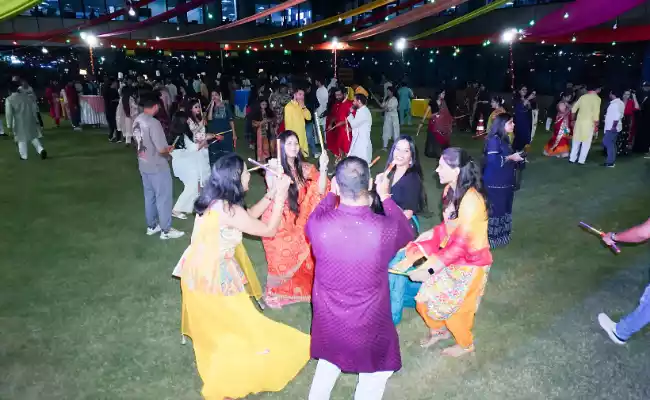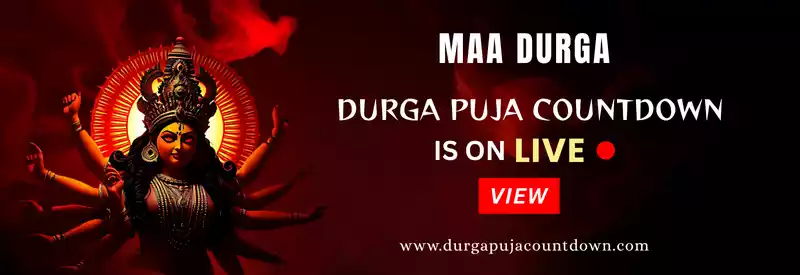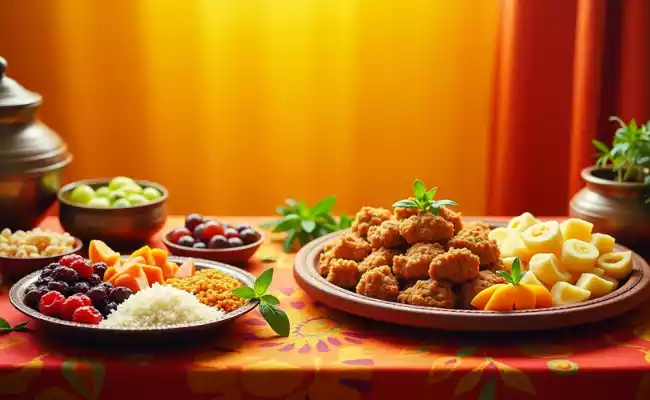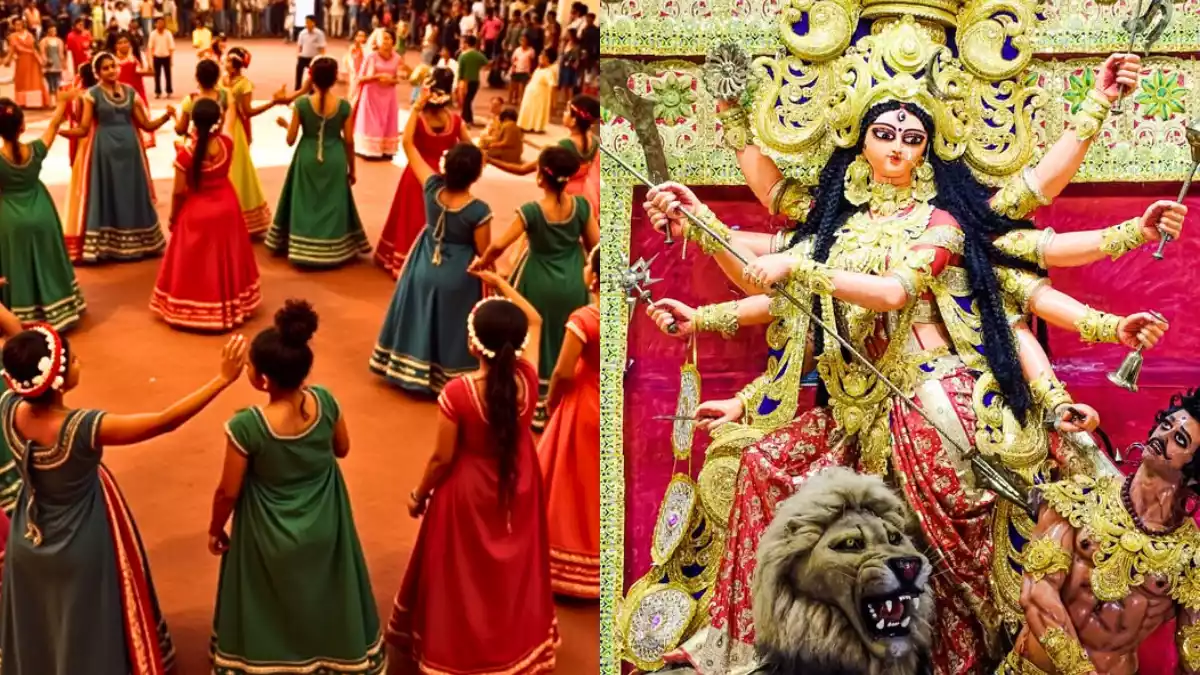Durga Puja vs Navratri – Discover the major differences between Navratri and Durga Puja including rituals, regions, fasting, feasting, cultural activities, and spiritual meanings in simple words.
Navratri and Durga Puja are two of the most celebrated and beloved festivals in India. Both honor the divine feminine energy and are dedicated to Goddess Durga.
They are filled with color, culture, devotion, and joy. Even though the central figure in both festivals is Maa Durga, they are celebrated in different styles, regions, and with different rituals.
Let’s understand the key differences between Navratri and Durga Puja in a simple way.
What Is Navratri?
The word Navratri means nine nights. This festival is celebrated over nine days and nights, where people worship nine different forms of Goddess Durga. Each day is dedicated to a different avatar of the goddess like Shailaputri, Brahmacharini, Chandraghanta, and so on.

Navratri is very popular in Gujarat, Maharashtra, and parts of North India. Devotees observe fasts, wear different colored clothes each day, and take part in Garba and Dandiya Raas, which are traditional dance forms. It’s a time of spiritual reflection and devotion.
What Is Durga Puja?
Durga Puja celebrates the story of Maa Durga’s victory over the demon Mahishasura. According to the legend, Mahishasura was a powerful demon who could change his shape and terrorized heaven and earth. Goddess Durga fought him for nine days and finally defeated him on the tenth day.

Durga Puja is mostly celebrated in West Bengal, Assam, Jharkhand, and other parts of eastern India.
The festival is known for its grand pandals, beautifully crafted idols, cultural programs, music, and delicious food. All people wear traditional clothes, visit pandals, and enjoy the festive atmosphere with family and friends.

Key Differences Between Durga Puja and Navratri
Here we are describing how these festivals differ from one another:
1. Duration of Celebration
- Navratri lasts for nine days, each day devoted to a different form of the goddess.
- Durga Puja focuses on the last five days of Navratri, especially from Sashti to Dashami. The tenth day, known as Vijayadashami, marks the immersion of the idol in water.
2. Geographical Focus
- Navratri is widely celebrated in western and northern India, especially in Gujarat and Maharashtra.
- Durga Puja is most popular in the eastern regions, like West Bengal, Assam, and Tripura.
3. Cultural Activities
- Navratri is famous for Garba and Dandiya, where people dance in traditional clothes in groups.
- Durga Puja features artistic pandals, live music, dramas, and traditional dhak drumming. Cultural performances are a big part of the celebrations.
4. Religious Focus
- In Navratri, devotees worship nine different forms of Goddess Durga.
- In Durga Puja, the focus is more on the story of Durga’s battle with Mahishasura and her final victory.
5. Fasting vs. Feasting

- During Navratri, many people follow strict fasting rules. They avoid non-vegetarian food, onion, and garlic.
- Durga Puja is more about feasting. In Bengal, food plays a huge role. People enjoy sweets, bhog, and traditional dishes like khichuri and luchi.
6. The End of the Festival
- Navratri ends on the ninth day, called Mahanavami, followed by Vijayadashami.
- Durga Puja ends on the tenth day, Dashami, when the idol is immersed in rivers or ponds, symbolizing her return to heaven.
Here is the comparison Table: Durga Puja vs Navratri
Similarities Between Durga Puja and Navratri
Even though both festivals are celebrated differently, they share common roots:
- Both honor feminine power and Goddess Durga.
- Both involve devotion, prayers, music, and dance.
- Both festivals bring families and communities together.
- Both represent the victory of good over evil.
Festival Summary – Durga Puja vs Navratri
- Navratri = 9 nights of devotion and dance
- Durga Puja = 5 days of cultural celebration and artistic display
- Navratri emphasizes fasting; Durga Puja highlights feasting
- Both end on Vijayadashami symbolizing victory of good
- One goddess, different regional expressions
Conclusion
While Navratri and Durga Puja may look different in practice, they are two sides of the same coin. They show the rich cultural diversity of India and the shared respect for the divine power of Maa Durga.
Whether you are dancing the night away in a Garba circle or standing in a crowded pandal in Kolkata, the spirit of the goddess brings joy, unity, and positivity to everyone’s body.
FAQ:
Q: Are Durga Puja and Navratri the same?
No, they are different festivals. While both honor Goddess Durga but Navratri is a nine-day spiritual observance celebrated mainly in western and northern India.
Durga Puja is a five-day cultural festival widely celebrated in eastern India, especially West Bengal.
Q: Why is Navratri celebrated for 9 days and Durga Puja only for 5 days?
Navratri focuses on worshipping the nine forms of Goddess Durga over nine days. Durga Puja highlights the last five days of this period, mainly celebrating the goddess’s victory over the demon Mahishasura.
Q: Which is more popular: Navratri or Durga Puja?
Both are equally popular but in different regions.
Navratri is more prominent in Gujarat, Maharashtra, and North India, while Durga Puja is the biggest festival in West Bengal and eastern India.
Q: Can Durga Puja and Navratri be celebrated together?
Yes. In many parts of India, both are observed at the same time with different rituals. While some fast and dance during Navratri, others visit Durga Puja pandals and enjoy cultural programs.
 Join Now
Join Now

